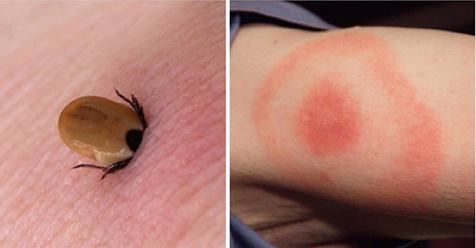It’s summer and people should be careful about tick bites this time of year. A single tick bite can hit you with a double pathogen punch reported the Cary Institute of Ecosystem Studies on June 20, 2014. Researchers have found that many blacklegged ticks are infected with Lyme disease and babesiosis.
It has been observed that people who are bitten by a blacklegged tick have a higher than anticipated chance of being exposed to more than one pathogen at the same time. This research was conducted by scientists at Bard College, Sarah Lawrence College, and the Cary Institute of Ecosystem Studies. Felicia Keesing, a professor of biology at Bard College, said that her research team discovered that ticks are almost twice as likely to carry two pathogens consisting of the bacterium which causes Lyme disease and the protozoan that causes babesiosis than they would have expected.
Therefore, as pointed out by Keesing, health care providers and the public should be particularly alert to the possibility of multiple infections which can come from the same tick bite. About 30 percent of the ticks were found to be infected with the agent which causes Lyme disease. And about one third of the ticks were also infected with at least one other pathogen. The agents which cause Lyme disease and babesiosis were found to exist together in 7 percent of the ticks.
The researchers collected thousands of blacklegged ticks from greater than 150 sites in Dutchess County, New York for this study. They found that not only was co-infection with the agents of Lyme disease and babesiosis higher than anticipated, but that rates of triple infection with the agents of Lyme, babesiosis, and anaplasmosis were also about twice as likely as anticipated. Keesing said people in tick-infested parts of the United States such as the Northeast, Mid-Atlantic, and Upper Midwest, have a greater vulnerability to two or three diseases from a single tick bite. Clearly, that risk is increased even more when they’re bitten by more than one tick.
People in the northeastern and midwestern United States are at heightened risk of acquiring tickborne diseases including Lyme disease and two emerging diseases, human granulocytic anaplasmosis and human babesiosis, reports PLOS One. The severity of health impacts can be increased by co-infection with two or more of these pathogens. All three of these pathogens are transmitted by blacklegged ticks and are carried by many of the same reservoir hosts. It is important that medical practitioners are aware of the risk of co-infection from tick bites.



